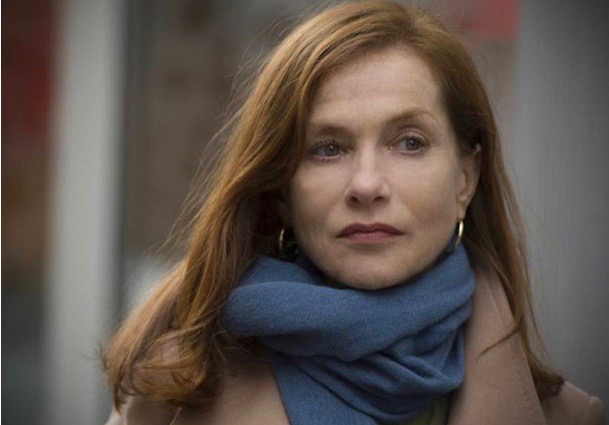ALEXIS CRUZ WRITES – If Hong Sang-soo had given an interview about how much he loved French cinema, the South Korean director wouldn’t have had to make a movie about it. But the man’s job is to make movies—especially perceptive ones that tackle the complexities of human relationships. He’s even free to sprinkle in some Jean-Luc Godard and Eric Rohmer if he wants to.
Still, Hong’s latest release, Claire’s Camera, is very French—for a Korean film. It has a slow pace and takes place in Cannes during the film festival. It has philosophical musings about art and a plot that revolves around a love-triangle between a male director, his girlfriend who markets his films and a young woman who works for them. How much more French can you get?
The movie takes place in Cannes, where a Korean director and frequent drunk named So have a film screening at the festival. He is accompanied by the sales team from his studio, which includes his girlfriend Yanghye and her employee, Manhee. These characters are played by Jung Jin-young, Chang Mi-hee, and Kim Min-hee, respectively. The movie begins with Manhee telling a friend how Yanghye fired her without a clear explanation. She later finds out that Yanghye was dating So, with whom Manhee had a one-night stand.
The unraveling of the affair begins when the characters separately meet the titular Claire and her polaroid camera. She’s a middle-aged Parisian who comes to Cannes to support a friend’s film, played by French legend Isabelle Huppert, who delivers an impeccable performance. Claire enjoys taking pictures of people and befriends many of the characters, unwittingly giving away details about the others. Claire is very much a tourist. She never seems aware of the drama going on between the Korean characters and instead follows them throughout town with a passive spontaneity, as she is intent on enjoying her vacation and forming a strong bond with Manhee. Her relaxed and casual personality provides most of the comedy in the film but also encourages the characters to become more emotionally engaged.
In the spirit of French cinema, Claire’s Camera is not a conventional film. The story is told mostly through flashbacks, so it jumps back and forth between different points in the movie’s timeline. The filmmaking is stripped down to very modest standards. Hong uses long shots, zooms and panning to add dramatic flair to the camera work. The shots maintain some distance from the actors so that sounds like cars, people passing by and murmurs in restaurants are easily audible. It feels less like watching a movie and more like listening to a conversation between strangers in a public area.
This people-watching sensation is a highlight of the film. The story revolves around conversations between characters in their private moments. Hong is known for his depictions of everyday relationships, which drive the story in Claire’s Camera. People meet in seemingly mundane settings like cafés, apartments and simple office spaces, but these routine backdrops help draw more attention to the characters’ actions. Conversations between the main characters are extremely awkward and take unusual turns. Manhee’s reaction to getting fired is to take a two-person selfie with her now former boss, so the two women share an uncomfortable moment on a Cannes sidewalk.
It’s customary of Hong’s work to strip away the façade of film-making and show the bare truth of life. Hong likes to focus on people’s interactions. The cinematography and writing reveal the most hidden subtleties of conversations. In the movie, Claire mentions that the camera helps slow things down so she can take a look at things and change them–and that is what Hong is doing through film. Conversations don’t happen just for the sake of furthering the plot but instead act as case studies. The characters’ word-choices, hand gestures and sudden tangents become more noticeable against the mundane backdrops.
So does it really matter if Claire’s Camera is more French or Korean? After all, Hong is only another acclaimed director in a long history of filmmakers taking cues from international cinema. Like Jacques Demy borrowing from American musicals or Sergio Leone ripping off Akira Kurosawa, what matters is what these movie icons add to the material. Hong can definitely mix his own charm and style with his French influence to tell a deep and amusing story.

